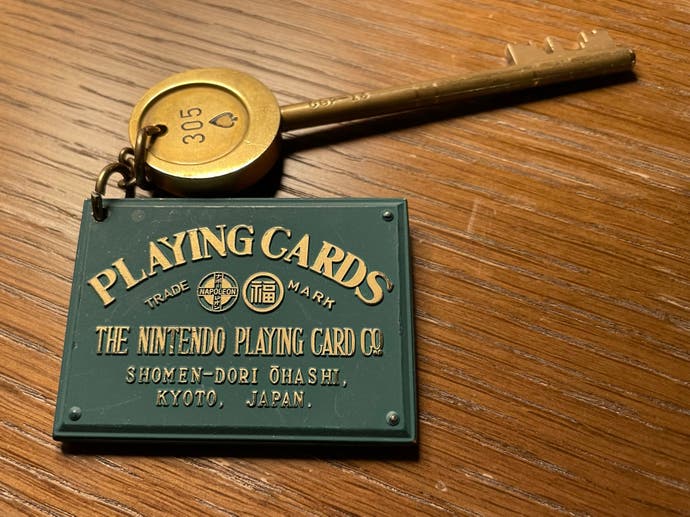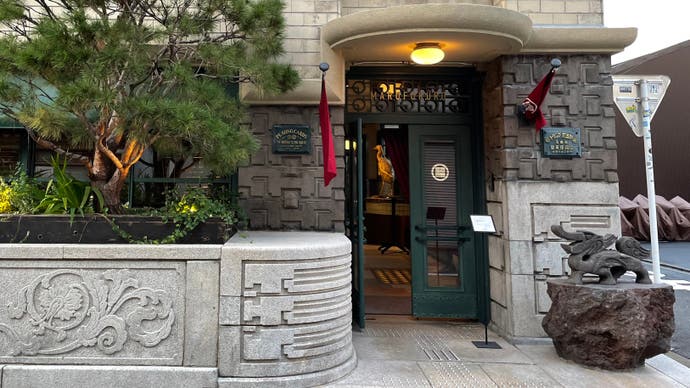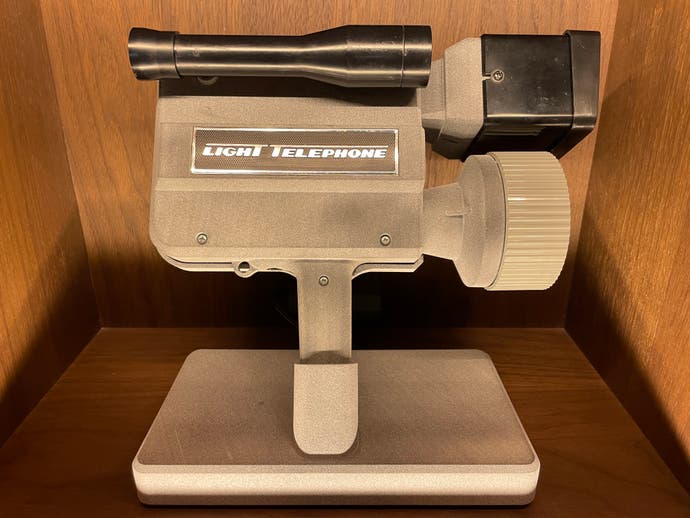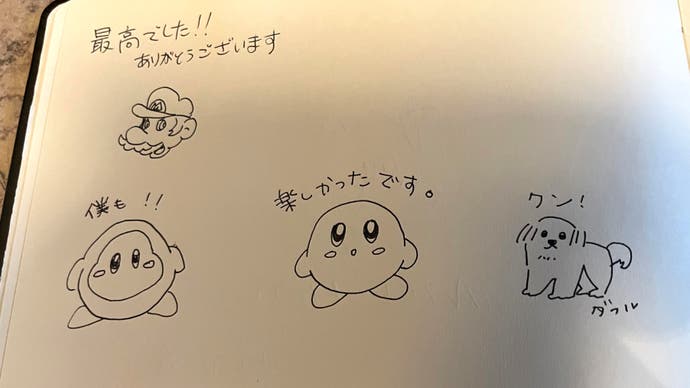One night at Marufukuro, the Nintendo hotel
Inside the former house of Yamauchi.
When you're Nintendo, creator of some of the most beloved games of all time that are just bursting with playful innovation, wonder, and creativity, you might expect that to be reflected in the building where the magic all happens. Sure, maybe it's not Willy Wonka's Chocolate Factory or even Google's gimmicky offices that exude a cringey big-kid energy, but you wouldn't think Shigeru Miyamoto, or all the other creative minds of Nintendo EPD, would spend their day-to-day in a giant corporate concrete block, which another developer I spoke to jokingly referred to as, "the place where dreams go to die".
Yet that seemingly oppressive exterior also lends it a curious enigmatic quality, if you think of that concrete block as a giant question block instead, one that dedicated fans want to reach out and bump for the chance to find out a little more about the company they love.

Since my previous visit to Japan in 2019, when I did attempt to make a pilgrimage to see the outside of Nintendo's Kyoto headquarters, there have however been developments for more physical spaces that embody the history and spirit of Nintendo that members of the public can appreciate. These include specialty stores like the Tokyo, and recently opened Osaka, branches of the Nintendo Store (which actually began in the US with Nintendo New York in Manhattan's Rockefeller Center), and theme parks like Super Nintendo World, which first opened in Osaka's Universal Studios Japan in 2021, with more set to be built Stateside. Nintendo is also repurposing its former Uji Ogura Plant to become a museum that will open in 2024, tentatively named the Nintendo Gallery.
Now that Japan has officially reopened to tourists post-pandemic, I've had the pleasure of visiting both Super Nintendo World and the Nintendo Stores, and there is an undeniable joy of being transported to the physical spaces that do recreate that Nintendo magic - though with the latter, its requirement to have a timed entry ticket to cope with overwhelming demand means you feel more compelled to actually spend rather than just casually browse.

But if you're looking for another perspective on Nintendo, away from the obviously tourist-friendly attractions saturated with Mario memorabilia, then there's another essential place to visit, or rather stay. Located in the heart of Kyoto is the Marufukuro, which on the surface looks like a boutique hotel in a quiet part of town, next to the Kamo River that runs through the city. What the average person might not know, however, is that this building was originally home to Nintendo's former headquarters. This is back when it was managed by Hiroshi Yamauchi, under whose leadership the company transformed from a playing card manufacturing company into the video game giant it is today.

It's not something that's immediately apparent, as you won't find signs of Mario or Zelda in the hotel's elegant decor and room furnishings, though it still keeps the original plaques on the outside of the building. The English plaque shows its former name 'The Nintendo Playing Card Co.', as well as two of its other interesting trademark logos, one early brand based on French 19th century emperor Napoleon Bonaparte and another with the kanji 'fuku' 福 (meaning fortune) inside a circle 'maru', or Marufuku, Nintendo's previous name used for distributing hanafuda cards. This is where the hotel draws its name, with the Japanese suffix -ro denoting its luxurious status. Certainly, it's the fanciest and priciest hotel I've personally ever stayed in on my own dime.
Although the point here is not to review the hotel - considering my previous time in Japan was spent in hostels, I'm not sure I have enough discerning taste - I can tell you that, yes, the bed was super comfortable and spacious and the bathroom was exquisite, and I had a leisurely soak in the bathtub when I first checked in. The great thing about paying for an expensive hotel room is they also throw in quite a few freebies, like electrical bike rental, the absolute best way to get around Kyoto, and a well-stocked mini-bar that I decided to empty with the help of local game dev chums at 17-Bit, founded by one-time Nintendo game counselor Jake Kazdal.

There is something especially alluring about spending the night not only in luxury but in the same room that might have been Yamauchi's office - or within proximity. By opting to reserve a room situated in the old building rather than the newly built annex (although this new building is designed by renowned self-taught architect Tadao Ando), I could be sure I was staying in a part of history. These elegant nods are present throughout, including the intimate self-service bar on the third floor, which apparently also stocks Yamauchi's favourite whisky and gin (although to my disappointment, it did not include any Japanese whisky).
But the real draw is the library next door, named dNa. As we still await the opening of the Nintendo Gallery, this compact but classy space is essentially the closest thing we have to a Nintendo museum. So immaculate was everything displayed, I almost felt nervous about touching anything. But you're indeed free to peruse at your leisure, which I made sure to do in the morning over a cup of coffee, while fortunately no one else was around.

The shelves contain books that document Nintendo's history, my personal highlights being three huge volumes containing the complete Japanese scripts for the Mother trilogy, as well as Nintendo collector Erik Voskuil's bilingual book, Before Mario, which covers the extensive history of the company's pre-video game toy products. These include Gunpei Yokoi's Light Telephone, which is also faithfully replicated as one of the art displays. There are even art installations for its hanafuda cards (designed by Rhizomatics, who have also collaborated with Tetsuya Mizuguchi on multiple occasions) as well as an interactive touch-screen one where you can examine its older products in 3D.
By contrast, filling up remaining spaces with actual Nintendo game consoles, like the N64 and GameCube, felt a little less imaginative and more for the sake of fanservice for folks who might have come in here not feeling like it was Nintendo enough. That said, given that the Famicom and Super Famicom models on display happened to be their mini retro console variants, I do wonder whether any guests had cheekily borrowed them from the library to plug into their TV in their room for a spot of entertainment in the evening.

Considering the high price for even just one night (and that's not including the dinner and/or breakfast options), staying at the Marufukuro may not necessarily be a thing that every Nintendo fan would want to do. But given how the guest book features plenty of doodles of Nintendo characters, its history and significance isn't lost on those who have made the pilgrimage to this building that had for decades only been visible from the outside. That you can also purchase the building's iconic plaque as a weighty miniaturised keyholder, just like the ones used for each hotel room key, also makes for a far classier souvenir than just another T-shirt or plushie.
There will be plenty more Nintendo Stores and Super Nintendo Worlds, but there is only one Marufukuro.

